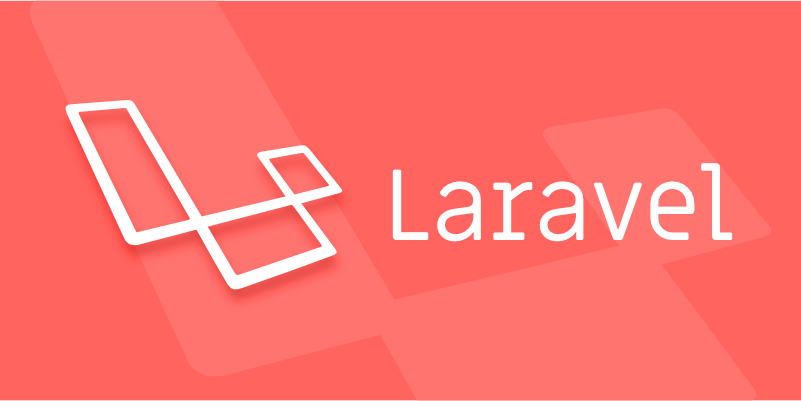The key to writing Laravel unit tests is to focus on behavior rather than implementation, keep the tests fast and isolated, use factory and seed data reasonably, and not ignore boundary situations. First, you should test the input and output, avoid excessive mocking, and not easily assert internal calls; second, use RefreshDatabase trait, forge external services, and do not share the test status; at the same time, use factories moderately, create only necessary data, and reduce dependence on global seeds; finally, cover boundary situations such as null values, invalid inputs, permission checks and error handling.

Writing good unit tests for Laravel apps isn't just about covering code — it's about making sure your logic behaves the way you expect, even as things change over time. The key is to write focused, readable tests that give confidence without being overly fragile or hard to maintain.

Focus on testing behavior, not implementation
One common mistake when writing unit tests is getting too caught up in how something works rather than what it should do. For example, if you're testing a method that calculates user points, what matters most is that the final number is correct, not whether it used a loop or a helper function.

Instead of asserting internal calls or checking every variable along the way, focus on the end result. This makes your tests more stable and less likely to break when refactoring.
Here's how to stay behavior-focused:

- Test input and expected output
- Avoid mocking more than necessary
- Don't assert internal method calls unless absolutely needed
This approach keeps your tests useful and easier to understand, especially for new developers joining the project.
Keep tests fast and isolated
Laravel's testing tools make it easy to set up test databases, mock services, and fake HTTP requests. But if you're not careful, your tests can get slow and unpredictable.
To keep things running smoothly:
- Use
RefreshDatabasetrait instead of rebuilding the schema each time - Fake external services like emails, queues, or APIs using Laravel's built-in fakes
- Don't share state between tests — always start fresh
Slow tests lead to skipped runs, which means bugs slip through. Keeping each test self-contained also helps avoid strange failures caused by leftover data from previous tests.
Use factories and seeders wisely
Factoryes are super helpful for setting up realistic test data, but it's easy to go overboard. If every test creates five users, three roles, and a full history of activity, things get messy fast.
A better approach:
- Only create what's needed for the current test
- Reuse factory states where possible
- Consider custom helpers or simplified models for edge cases
Also, don't rely too much on global seeders unless they're essential. It makes tests harder to read and increase setup time.
Don't skip edge cases
It's tempting to only test the happy path — everything working perfectly. But real apps deal with bad input, missing data, and unexpected conditions all the time.
Make sure to cover:
- Missing or null values
- Invalid user input
- Permission checks (like unauthorized access)
- Error handling and fallback behavior
These might not be the most exciting tests to write, but they catch real issues before they hit production.
That's basically it. Writing solid unit tests in Laravel comes down to staying focused, keeping things clean, and thinking ahead about what could go wrong. Not too flashy, but definitely worth doing right.
The above is the detailed content of Writing comprehensive unit tests for Laravel applications. For more information, please follow other related articles on the PHP Chinese website!

Hot AI Tools

Undress AI Tool
Undress images for free

Undresser.AI Undress
AI-powered app for creating realistic nude photos

AI Clothes Remover
Online AI tool for removing clothes from photos.

Clothoff.io
AI clothes remover

Video Face Swap
Swap faces in any video effortlessly with our completely free AI face swap tool!

Hot Article

Hot Tools

Notepad++7.3.1
Easy-to-use and free code editor

SublimeText3 Chinese version
Chinese version, very easy to use

Zend Studio 13.0.1
Powerful PHP integrated development environment

Dreamweaver CS6
Visual web development tools

SublimeText3 Mac version
God-level code editing software (SublimeText3)

Hot Topics
 What are policies in Laravel, and how are they used?
Jun 21, 2025 am 12:21 AM
What are policies in Laravel, and how are they used?
Jun 21, 2025 am 12:21 AM
InLaravel,policiesorganizeauthorizationlogicformodelactions.1.Policiesareclasseswithmethodslikeview,create,update,anddeletethatreturntrueorfalsebasedonuserpermissions.2.Toregisterapolicy,mapthemodeltoitspolicyinthe$policiesarrayofAuthServiceProvider.
 How do I create new records in the database using Eloquent?
Jun 14, 2025 am 12:34 AM
How do I create new records in the database using Eloquent?
Jun 14, 2025 am 12:34 AM
To create new records in the database using Eloquent, there are four main methods: 1. Use the create method to quickly create records by passing in the attribute array, such as User::create(['name'=>'JohnDoe','email'=>'john@example.com']); 2. Use the save method to manually instantiate the model and assign values ??to save one by one, which is suitable for scenarios where conditional assignment or extra logic is required; 3. Use firstOrCreate to find or create records based on search conditions to avoid duplicate data; 4. Use updateOrCreate to find records and update, if not, create them, which is suitable for processing imported data, etc., which may be repetitive.
 How do I install Laravel on my operating system (Windows, macOS, Linux)?
Jun 19, 2025 am 12:31 AM
How do I install Laravel on my operating system (Windows, macOS, Linux)?
Jun 19, 2025 am 12:31 AM
Yes,youcaninstallLaravelonanyoperatingsystembyfollowingthesesteps:1.InstallPHPandrequiredextensionslikembstring,openssl,andxmlusingtoolslikeXAMPPonWindows,HomebrewonmacOS,oraptonLinux;2.InstallComposer,usinganinstalleronWindowsorterminalcommandsonmac
 How do I define methods (actions) in a controller?
Jun 14, 2025 am 12:38 AM
How do I define methods (actions) in a controller?
Jun 14, 2025 am 12:38 AM
Defining a method (also known as an action) in a controller is to tell the application what to do when someone visits a specific URL. These methods usually process requests, process data, and return responses such as HTML pages or JSON. Understanding the basic structure: Most web frameworks (such as RubyonRails, Laravel, or SpringMVC) use controllers to group related operations. Methods within each controller usually correspond to a route, i.e. the URL path that someone can access. For example, there may be the following methods in PostsController: 1.index() – display post list; 2.show() – display individual posts; 3.create() – handle creating new posts; 4.u
 What are controllers in Laravel, and what is their purpose?
Jun 20, 2025 am 12:31 AM
What are controllers in Laravel, and what is their purpose?
Jun 20, 2025 am 12:31 AM
The main role of the controller in Laravel is to process HTTP requests and return responses to keep the code neat and maintainable. By concentrating the relevant request logic into a class, the controller makes the routing file simpler, such as putting user profile display, editing and deletion operations in different methods of UserController. The creation of a controller can be implemented through the Artisan command phpartisanmake:controllerUserController, while the resource controller is generated using the --resource option, covering methods for standard CRUD operations. Then you need to bind the controller in the route, such as Route::get('/user/{id
 How do I customize the authentication views and logic in Laravel?
Jun 22, 2025 am 01:01 AM
How do I customize the authentication views and logic in Laravel?
Jun 22, 2025 am 01:01 AM
Laravel allows custom authentication views and logic by overriding the default stub and controller. 1. To customize the authentication view, use the command phpartisanvendor:publish-tag=laravel-auth to copy the default Blade template to the resources/views/auth directory and modify it, such as adding the "Terms of Service" check box. 2. To modify the authentication logic, you need to adjust the methods in RegisterController, LoginController and ResetPasswordController, such as updating the validator() method to verify the added field, or rewriting r
 How do I use Laravel's validation system to validate form data?
Jun 22, 2025 pm 04:09 PM
How do I use Laravel's validation system to validate form data?
Jun 22, 2025 pm 04:09 PM
Laravelprovidesrobusttoolsforvalidatingformdata.1.Basicvalidationcanbedoneusingthevalidate()methodincontrollers,ensuringfieldsmeetcriterialikerequired,maxlength,oruniquevalues.2.Forcomplexscenarios,formrequestsencapsulatevalidationlogicintodedicatedc
 Selecting Specific Columns | Performance Optimization
Jun 27, 2025 pm 05:46 PM
Selecting Specific Columns | Performance Optimization
Jun 27, 2025 pm 05:46 PM
Selectingonlyneededcolumnsimprovesperformancebyreducingresourceusage.1.Fetchingallcolumnsincreasesmemory,network,andprocessingoverhead.2.Unnecessarydataretrievalpreventseffectiveindexuse,raisesdiskI/O,andslowsqueryexecution.3.Tooptimize,identifyrequi






